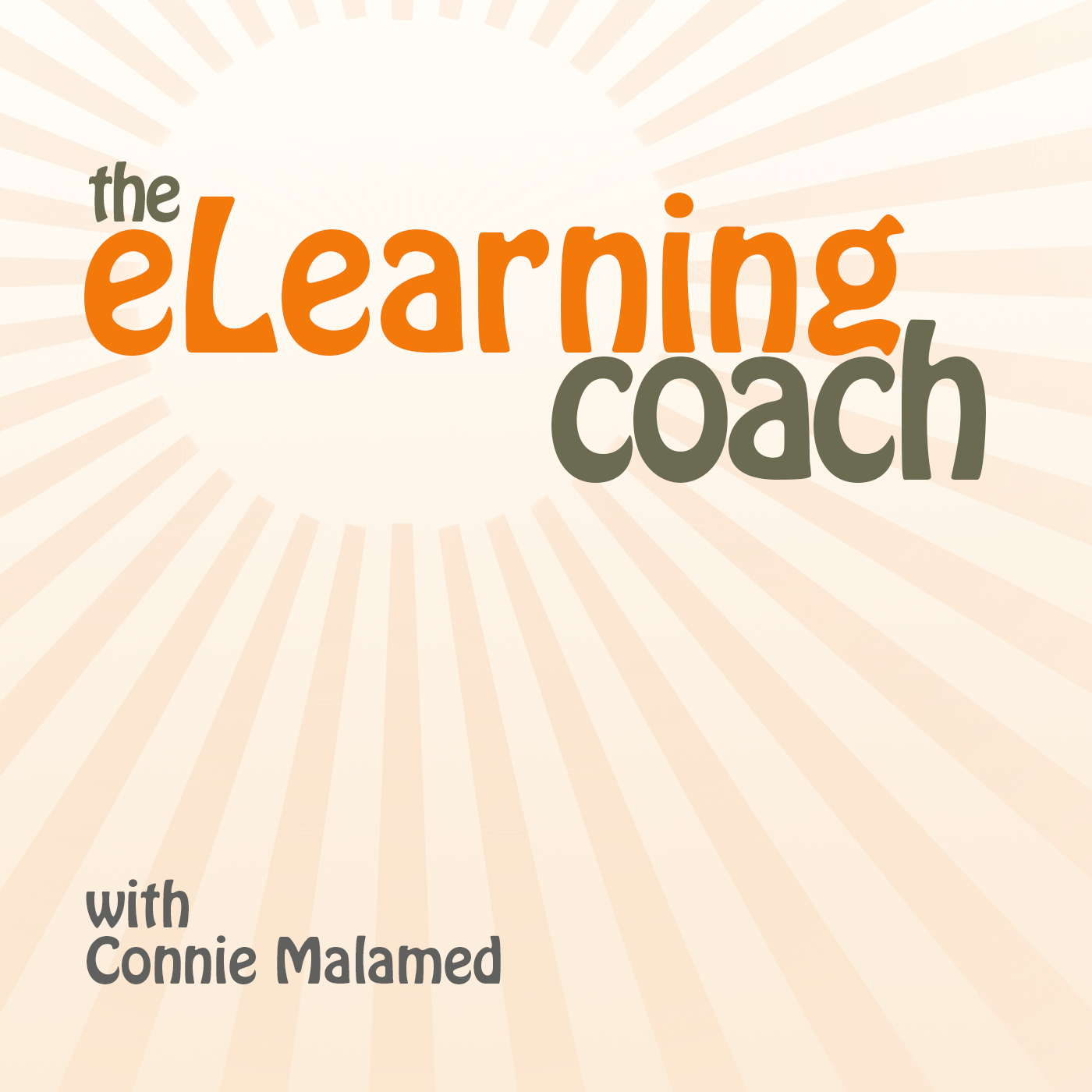
Designing with Love
Hosted by Grand Canyon University (GCU) adjunct instructor and professional instructional designer Jackie Pelegrin, this podcast explores instructional design, e-learning, and how to incorporate AI technology into different aspects of your work. Tune in for expert tips, real-world insights, and inspiring stories from students, alumni, and leaders in the field.
Designing with Love
Designing Effective Learning: A Deep Dive into the Dick and Carey Model
Have you ever struggled to create courses that truly engage your learners? The Dick and Carey model might be the game-changer you've been seeking. Unlike traditional linear approaches, this powerful framework views instructional design as a recipe where each ingredient affects the final outcome.
For beginners, the model offers essential guidance through potentially overwhelming design processes. The systematic approach helps you resist the temptation to skip crucial planning stages. By spending quality time on front-end analysis, creating specific objectives, ensuring alignment between components, and conducting smart evaluations, you'll create learning experiences that truly resonate with your audience.
Ready to transform your approach to instructional design? Listen now, and don't forget to check out the interactive resources in the show notes to deepen your understanding of this invaluable framework.
🔗 Episode Links:
Please check out the resources mentioned in the episode. Enjoy!
An In-Depth Analysis of the Dick and Carey Model
📑 References:
Pappas, C. (2024, February 28). An In-Depth analysis of the Dick and Carey model. eLearning Industry. https://elearningindustry.com/an-in-depth-analysis-of-the-dick-and-carey-model
Join PodMatch!Use the link to join PodMatch, a place for hosts and guests to connect.
Disclaimer: This post contains affiliate links. If you make a purchase, I may receive a commission at no extra cost to you.
💟 Designing with Love + allows you to support the show by keeping the mic on and the ideas flowing. Click on the link above to provide your support.
☕ Buy Me a Coffee is another way you can support the show, either as a one-time gift or through a monthly subscription.
🗣️ Want to be a guest on Designing with Love? Send Jackie Pelegrin a message on PodMatch, here: Be a guest on the show
🌐 Check out the show's website here: Designing with Love
📱 Send a text to the show by clicking the Send Jackie a Text link above.
👍🏼 Please make sure to like and share this episode with others. Here's to great learning!
Hello and welcome to the Designing with Love podcast. I am your host, jackie Pellegrin, where my goal is to bring you information, tips and tricks as an instructional designer. Hello, gcu students, alumni and fellow educators, welcome to episode 55 of the Designing with Love podcast. Today we're diving into a foundational instructional design model that's stood the test of time the Dick and Carrie Systems Approach Model. If you're a new instructional designer or just starting to explore the field, this episode is especially for you. We're going to unpack what the Dick and Carrie model is, why it matters and how you can begin to apply it in your own projects.
Speaker 1:First things first. What is the Dick and Carey model? Developed in 1978 by Walter Dick and Lou Carey, this model views instructional design as a system of interrelated components rather than a linear process. Think of it like a recipe components rather than a linear process. Think of it like a recipe Every ingredient impacts the final dish and adjusting one part affects the rest. Unlike other models that may focus solely on instructional delivery, dick and Kerry emphasize the importance of analyzing, designing, developing and evaluating instruction as a systematic, data-informed way. All right, so let's walk through the eight core principles of the model that you can apply to your projects.
Speaker 1:Principle number one systematic design. When you start creating engaging lessons, design is the first thing that should come to mind. The Dick and Kerry model urges you to think systematically at this step, which means you must ensure each element has a purpose and contributes to the overall learning experience. Principle number two analyze learner characteristics. Thoroughly research and analyze your learners' characteristics to focus every element on them. Some ways to do this is to consider learner profiles by conducting surveys, where you can ask learners about their preferences and current knowledge. Principle number three define instructional objectives. Effective and measurable objectives are what guide your instructional design process, showing instructors your instructional design process, showing instructors, designers and learners what they should aim to achieve. Principle number four organize instructional content. Here you need to create a seamless flow with lessons that are logically connected. This ensures you're not confusing your learners, but guiding them to build a strong foundation of knowledge and skills. Guiding them to build a strong foundation of knowledge and skills.
Speaker 1:Principle number five select instructional strategies. Choose the strategy that will help you execute your plan. This can take account of different factors, such as instructional theories and learning models, which will help you design and deliver the content in a way that resonates with your learners. Principle number six development and implementation. This is where you create the main learning content by taking the instructional strategy and developing the materials that will help learners achieve the performance objectives. Principle number seven conduct formative evaluation After creating the learning materials. It's important to make sure it hits the mark before implementing it. This is where evaluation tests come in. Make sure to test your instruction with a small group of learners and gather feedback to make improvements. And finally, principle number eight summative evaluation. Here you conduct post-implementation evaluation of the effectiveness of the learning experience.
Speaker 1:This stage is all about collecting and analyzing data to figure out how well your program works. It's important to note that each principle is intentional and feeds into the next, ensuring the final product is effective, learner-centered and grounded in data. So why should beginner instructional designers learn the Dick and Kerry model? Because it offers structure. When you're new to this field, having a clear process can be incredibly helpful. This model encourages thoughtful planning, continual feedback and strong alignment between goals, instruction and assessment. It also reflects real-world project workflows, especially in academic or corporate environments where data and outcomes matter. Now let's talk about how to actually use this model in practice, especially if this is your first time.
Speaker 1:Tip number one don't skip the front-end analysis. It might be tempting to jump straight into designing materials, but resist this urge. Spend quality time on steps number one through three. Understanding the learning goals, the skills involved and the learners themselves lays the groundwork for everything that follows. Tip number two keep your objectives specific and measurable. When you get to step number four writing performance objectives make sure they're clear and actionable. Use verbs like describe, analyze, demonstrate or apply. Think about what success looks like in real life. Tip number three align everything. Make sure your objectives, assessments and learning strategies all align. This consistently ensures that you're teaching and testing the right things. Tip number four start small with formative evaluation. When you get to step number eight formative evaluation. Okay, try again. Now let's talk about how to actually use this model in practice, especially if it is your first time.
Speaker 1:Tip number one don't skip the front-end analysis. It might be tempting to jump straight into designing materials, but resist that urge. Spend quality time on steps number one through three. Understanding the learning goals, the skills involved and the learners themselves lays the groundwork for everything that follows. Tip number two keep your objectives specific and measurable. When you get to step number four writing performance objectives make sure they're clear and actionable. Use verbs like describe, analyze, demonstrate or apply. Think about what success looks like in real life. Tip number three align everything. Make sure your objectives, assessments and learning strategies all align. This consistency ensures that you're teaching and testing the right things.
Speaker 1:Tip number four start small with formative evaluation. When you get to step number eight formative evaluation test your course or materials with a small group of users. Ask for honest feedback and be ready to make changes. It's much better to iterate early than to wait for a full rollout and realize something isn't working. Believe me, this will save you a lot of time and headaches. Tip number five use templates and tools. If you're feeling overwhelmed, use templates for objectives, assessments and strategies. Tools like Google Docs, miro or Trello can help you organize each stage of the model. Remember, you don't need fancy software to design great learning. Tip number six be flexible, not rigid. Although this is a systems model, real projects are rarely neat and tidy. Make sure to use Dick and Carrie as your guide, not your cage. You can adapt as needed based on time, resources or project constraints. All right, so now I will share an example in action.
Speaker 1:Let's say you've been asked to design a training for new customer service representatives at a tech company. Using Dick and Carrie, you could do the following. Number one start by identifying the end goal. Maybe it's handle customer support calls with 90% accuracy. Number two break down the skills, like using the CRM, responding to FAQs and de-escalating angry customers. Number three analyze who your learners are. Perhaps they are recent graduates with little tech experience. Number four write performance objectives like given a customer inquiry, the learner will respond using company-approved language with no more than one error. Number five develop assessments using a blended strategy. Create the materials and then test it with a pilot group before rolling it out to the whole team. As you can probably gather, each step is like a checkpoint that ensures your design is thoughtful and effective.
Speaker 1:I hope you have found this information about how to use the Dick and Kerry model in your designs helpful, especially if you're new to the field. As a recap, we covered what the Dick and Kerry model is, the nine components of the model, why it's great for novice instructional designers, tips for first-time users and an example in action. If this episode helped you to understand the Dick and Carrie model better, I would love for you to share it with a fellow designer or leave a review where you're listening. Oh, and don't forget to subscribe so you never miss an episode. I would also encourage you to check out the interactive resource that contains the key details covered in this episode by visiting the show notes. I have also encourage you to check out the interactive resource that contains the key details covered in this episode by visiting the show notes. I have also included a link to an article from the e-learning industry that provides an in-depth analysis of the model.
Speaker 1:As I conclude this episode, I would like to share an inspiring quote from Orison Swett Marden, an American author who wrote about topics like motivation and character. A good system shortens the road to the goal. The Dick and Carrie model helps you shorten that road, not by skipping steps, but by giving the roadmap to get there with intention and success. Thank you for taking some time to listen to this podcast episode today. Your support means the world to me. If you'd like to help keep the podcast going, you can share it with a friend or colleague, leave a heartfelt review or offer a monetary contribution. Every act of support, big or small, makes a difference and I'm truly thankful for you.
Podcasts we love
Check out these other fine podcasts recommended by us, not an algorithm.

Buzzcast
Buzzsprout
Podcasting Made Simple
Alex Sanfilippo, PodMatch.com
The eLearning Coach Podcast
Connie Malamed: Helps people build stand-out careers in learning design.
Dear Instructional Designer
Kristin Anthony
The Visual Lounge
TechSmith Corporation
Wake Up the Lions!
Rory Paquette
The Way I Heard It with Mike Rowe
The Way I Heard It with Mike Rowe
Book 101 Review
Daniel Lucas
Movie 101 Review
Daniel Lucas And Bob LeMent
Mental Health 101
Daniel Lucas/G.Mick Smith
LOVE Letters
Daniel Lucas
The WallBuilders Show
Tim Barton, David Barton & Rick Green
